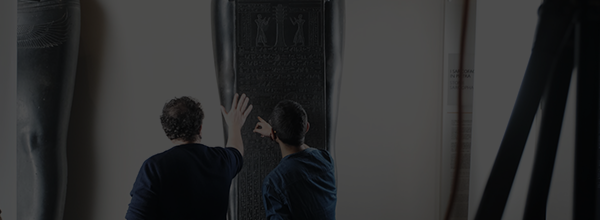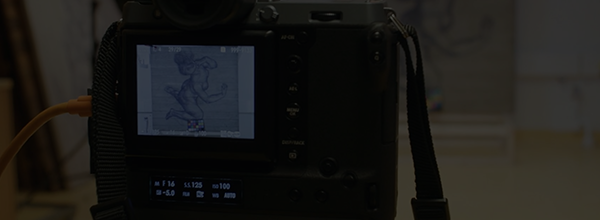
CASE STUDY
04
Reconstruction project with the use of Fujifilm camera
equipment at Stockholm City Hall, Stockholm, Sweden.
equipment at Stockholm City Hall, Stockholm, Sweden.
Stockholm City Hall is perhaps best known for the party that takes place in connection with the awarding of the Nobel Prize in December each year. The City Hall in Stockholm, inaugurated in 1923, is a building that contains a number of artistic works.
The artist Axel Wallert (1888-1962) participated 1918–1923 in the decoration of Stockholm's city hall, where he did the paintings in the coffered ceiling in the colonnade towards Riddarfjärden, the southern portico. There are blue monochrome paintings depicting various ancient mythological figures.
The City of Stockholm contacted Mikael Cronwall, head of education at Stockholm School of Photography (Fotoskolan STHLM), to investigate the possibilities of getting help with a digital reconstruction project of Axel Wallert's 105 ceiling paintings. After 100 years, many of the paintings were very worn and faded from air pollution as well as wear and tear.

Only a few of the paintings were clear – in many cases only image traces remain. Mikael produced an cultural preservation project, the likes of which had never before been carried out in Sweden. Two educational groups, 40 students and 4 teachers, worked full-time for more than three weeks to produce new digital originals of Wallert's paintings.
Nina Sandberg at The Stockholm School of Photography, developed a method for the reconstruction work, which is based on photographs of the panels being handled in Photoshop and information from older photographs, carbon sketches, color samples, etc. being entered into the reconstruction work. The result is a visual experience that could very well correspond to what a visitor took part in a hundred years ago.
The need for a large digital image sensor that delivers raw files of the highest quality was in the project's requirements specification. A large image sensor provides the amount of information needed to create raw files with as consistent a quality as possible in combination with a high resolution. This was a prerequisite for being able to produce the very large reconstructions that were to be mounted on the roof of Stockholm City Hall.
The project is therefore photographed with the Fujifilm GFX100 and Fujinon GF Lenses, a qualitative and stable photography solution. The camera has the image sensor and electronic management of image information that the project required. The fact that the camera is also easy to work with facilitated the work with the photography of the large and heavy original panels, 150x150 cm, made of untreated pine planks.
A special photography rig had to be built by carpenters to enable the photography.
The photo shoot took place in an old disused hospital near Stockholm City Hall. All panels were removed from their location outdoors and photographed. The panels were photographed both in their entirety and in smaller sections according to a photography plan. The latter to enable detailed reconstruction work.

In order to prepare for optimal image quality, test shootings were done with different lenses from the GF series. It soon became clear that the Fujifilm GF 120/4 R LM OIS WR Macro was the lens to be used. The lens combines a high resolution in combination with consistently very good sharpness, even in the smallest details of the photographed object. To maintain sharpness in all corners of the image file, the old photographic rule of stopping down 2.5 stops from full aperture for maximum edge sharpness was used. The result was perfect.
After shooting with the GFX100 and Profoto flashes, the raw files were handled in Capture One before the actual digital reconstruction work began. The processed digital files were printed on fabric by Big Image Systems in Stockholm and assembled on site in Stockholm City Hall.
The image files are stored long-term by the City of Stockholm in order to be used when new copies of the reconstructions need to be produced.



















































